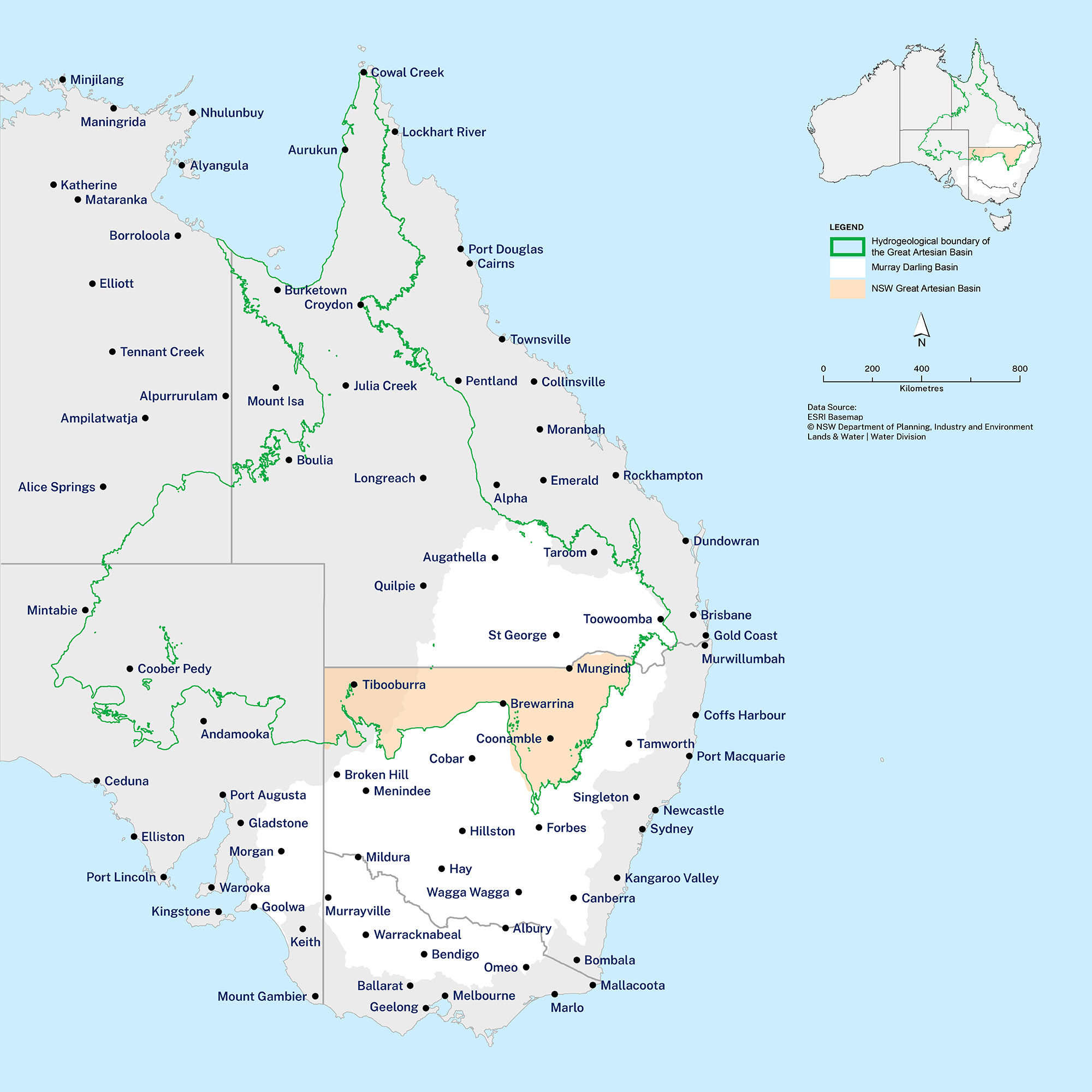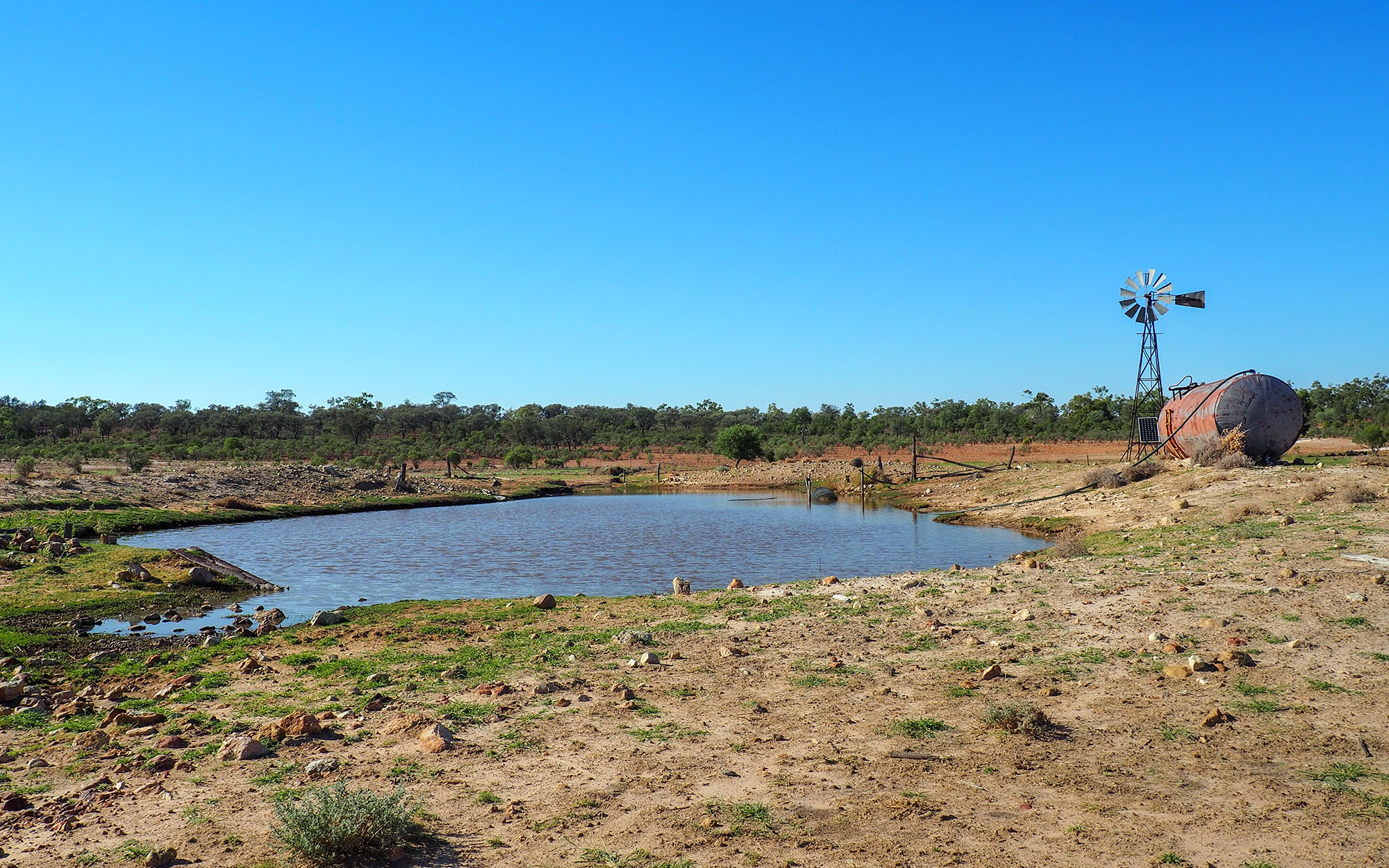What is the Great Artesian Basin?
The Great Artesian Basin is one of the world's largest and deepest underground freshwater resources in the world.
- It holds around 65 million gigalitres of groundwater
- It lies below 22% of Australia, extending into the Northern Territory, Queensland, New South Wales and South Australia
- It sits below 25% of NSW
Why is the Great Artesian Basin important?
The Great Artesian Basin is a vital water source for humans, animals and the environment.
The Great Artesian Basin is particularly important in regional areas like the north-west of NSW where rainfall is low. It supports local communities by providing town water and sustains agriculture, tourism and other industries.
First Nations people have relied on the Basin’s water for more than 60,000 years. It also holds significant cultural, social and spiritual value to First Nations communities. Its springs are linked to cultural stories and practices, and act as important trade and communication routes.
The Basin’s springs and wetlands support a range of rich ecosystems, including many endangered animals and plants, and are home to species that can’t be found anywhere else in the world.
It is important that we manage the Basin’s groundwater in a way that protects water for our communities and the environment.

How is water in the Great Artesian Basin managed?
There are around 8,200 bores tapping into the Great Artesian Basin across NSW. Uncontrolled water flow from bores into bore drains reduces water pressure and volume in the Basin. Water is also wasted through evaporation and seepage into other upper aquifers via inefficient bores. This threatens the ecosystems that rely on the Basin’s water to survive, and limits landowner and First Nations access to water.
The NSW government has been working to improve water infrastructure and reduce the uncontrolled flow of groundwater. Since the 1950s, there have been several programs aimed at helping landowners replace failing bores and bore drains, reducing water wastage.
The NSW government has also been monitoring artesian pressure, flow, temperature and ecological health of springs across the Basin, so that scientists can track changes in the Basin’s health over time. This information helps us better manage the Basin.
The Great Artesian Basin is a connected system across the Basin states and territory and needs to be managed as such.
The Great Artesian Basin Strategic Management Plan
In 2020, the Australian government and Basin state governments released the current Great Artesian Basin Strategic Management Plan.
The plan was developed in consultation with the Great Artesian Basin Coordinating Committee, which represents the communities, landholders, water users and industries operating in the Basin. The plan aims to improve collaborative management, achieve social and economic outcomes, and ensure the long-term health of the Basin and its dependent ecosystems.
Read the planWho is responsible for managing water in the Great Artesian Basin?
- New South Wales Government
- Queensland Government
- South Australian Government
- Northern Territory Government
- Commonwealth Department of Climate Change, Energy, the Environment and Water
How is the department's Water Group responsible?
State responsibilities include:
- Setting water extraction limits and management of extraction compliance
- Implementing water sharing plans
- Ensuring bores are efficient and constructed to the standards
- Managing groundwater resources
- Managing water efficiency projects such as the Cap and pipe the bores program
- Granting and managing new water access licences for limited purposes
- Monitoring changes in groundwater and ecosystem health over time
Find out more about the Great Artesian Basin including water plans and current projects.
